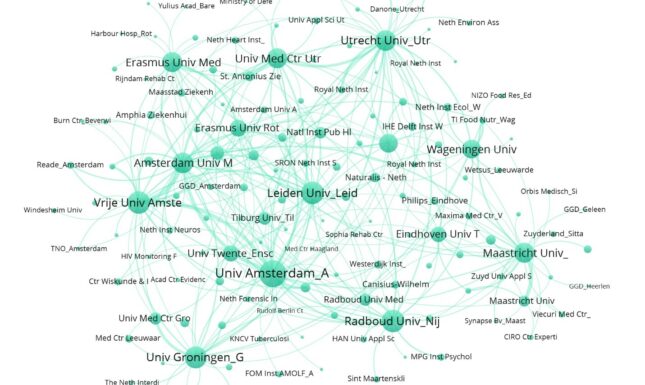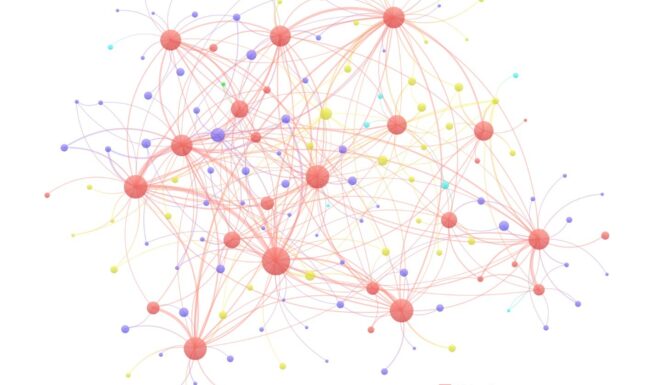Multiple-affiliation researchers as bridgebuilders in research systems
Researchers holding part-time positions at different organisations may contribute to the efficiency of inter-organisational collaborations, but what are the drivers underlying these collaborations? We performed an empirical study to explore the role of geographic and institutional proximities.
To tackle today’s societal challenges requires research collaboration across organizations and disciplines. Making research collaborations work is not always easy, especially when collaborations involve diverse organisations and stakeholders who do not necessarily share the same logics and objectives. We conducted a study on researchers holding part-time positions in different organisations, considering them as key ‘bridge persons’ connecting organisations in the research landscape, linking heterogeneous organisations fostering coordination and exchange of knowledge.
More specifically, we analysed the drivers of researchers holding multiple appointments. To this end, we rely on the notion of proximity. We focussed on the effect of geographic and institutional proximity on the number of researchers holding part-time positions among any two organizations. The methodology we developed could also serve as a framework to benchmark national innovation systems of different countries. Such comparative exercise could reveal the relative importance of travel distance and institutional barriers in each country.
The Netherlands as a case study
In order to explore the role of geographic distance and institutional proximity for researchers holding multiple affiliations, we focused on a country whose research system we know quite well: The Netherlands. Using scientific publications retrieved from the Web of Science, we identified all authors who simultaneously indicated two or more institutional affiliations in the Netherlands (we excluded for this study authors whose multiple affiliations included foreign organisations). The selection process relied on an algorithm developed some years ago by colleagues at CWTS, which allows for the identification of all the publications produced by a given individual. As we wanted to focus on those researchers with a truly part-time position rather than researchers changing jobs, we selected only those researchers indicating the same multiple affiliations in 2016 and in 2018. Following this rather conservative criterion, we identified 2,828 researchers employed by 626 Dutch organisations. The resulting inter-organisational network included nearly two hundred thousand unique organisation pairs (195,625 pairs, to be precise). Obviously, the vast majority of organisations included in our study did not have any researcher linking them through her multiple institutional affiliations. Only slightly less than 1% of all these pairs of organisations were actually connected through one or several researchers with multiple affiliations. Figure 1 depicts the inter-organisational network, including only organisations with four or more co-affiliated researchers.
We then tested whether the number of co-affiliated researchers to a pair of organizations depends on the geographic and institutional proximities between organizations using a gravity model, quite popular among geographers of innovation. We measured the geographic distance between two organizations by the time required to travel from the municipality of the one organization to the municipality of the other organization.


Additionally, we considered institutional proximity when two organisations linked by a researcher with multiple affiliations belong to the same institutional sector. For this, we classified all the organisations in institutional sectors: University, Industry, Government, Public Research Organisation (PRO) and Healthcare organizations. Figure 2 shows the same network of organisations as Figure 1, but including colours to indicate the institutional sectors.


What does our analysis show?
First (as we expected), travel time clearly decreases the chances of multiple affiliations. That is, the longer the geographic distance between two organisations, the less likely a researcher will be affiliated simultaneously to these two organisations. In other words, researchers with dual appointments tend to be affiliated with two organisations located nearby one another, indicating the relevance of commuting time. Regarding institutional proximity, our results indicate that researchers holding multiple affiliations do not prefer to work for organisations in the same institutional sector. Rather, they tend to cross institutional sectors, and in doing so they could indeed be acting as bridging persons who connect heterogeneous organisations. Thus, these researchers may contribute to creating bridges between these (sometimes very) different types of organisations, guided by different logics and objectives. In a further exploration of the role of institutional proximity, we found that mainly university researchers play the central role in connecting the entire national research system through co-affiliations with industry, government, healthcare and PROs, as well as among universities themselves.
Implications
We consider that individuals holding part-time positions in several organisations represent a very special actor in the research landscape, even more when the organisations they connect operate in different sectors. Individuals, rather than formal arrangements, may find it easier to cross institutional boundaries between university, industry, government, PROs, and healthcare organizations. While connections can also be made via alternative arrangements (e.g. public-private partnerships, contract research, participation in joint research projects, among others), having researchers with dual appointments may represent a very efficient and effective way in navigating potential conflicts when trying to connect very different organisations. At the same time, such individuals should be supported in their complex roles avoiding conflicts of interest at the personal level.
Photo credits header image: Alex Azabache





0 Comments
Add a comment